Job Quality Tools Library > Section 4: Strengthening Practices to Improve Job Quality > Tools: Supportive Work Environment
Originally posted: May 11, 2020
Last updated: April 5, 2023
Section 4, the core of the library, includes tools designed to address specific components of job quality. Once organizations have determined their job quality priorities, they can turn to these tools to shift practices in the areas they have deemed most urgent, either in their own organizations or in the businesses with which they partner.
We’ve organized tools into categories that reflect the job quality attributes most commonly cited across the job quality frameworks and definitions included in Section 1. These attributes include wages, benefits, scheduling, legal rights, equity and inclusion, opportunity to build skills and advance, supportive work environment, worker voice, and employee ownership. Each attribute also includes sub-categories for ease of navigation.
↓ Tools and Resources Below the Box ↓
Library Navigation
- Job Quality Tools Library Homepage
- About This Library
- Section 1: Understanding Job Quality
- Section 2: Assessing Job Quality
- Section 3: Engaging Businesses on Job Quality
- Section 4: Strengthening Practices to Improve Job Quality
- Section 5: Monitoring Improvements in Job Quality
- Special: COVID-19 Response Tools and Resources
- Index of Tools by Field
Manager Training

Google re:Work – Manager Training Tools
Who’s It For: Employers, Economic Development, Investing and Lending, Worker Advocacy, Workforce Development
What’s It For: Workers report that their managers are a key contributor to job quality. This toolbox includes resources to train and support managers, including a manager feedback survey, new manager training materials, and templates for meetings with employees. While this tool is designed for businesses, other practitioners could share it with their business partners to encourage more supportive supervisory practices.
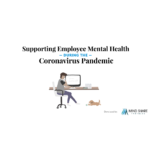
Mind Share Partners – Supporting Employee Mental Health During the Coronavirus Epidemic (Toolkit)
Who’s It For: Employers, Economic Development, Investing and Lending, Workforce Development
What’s It For: This toolkit is designed to equip organizations and businesses with strategies to support employee mental health during the coronavirus pandemic. The guide can be used as an informational document or as a presentation to leaders and managers, including human resources teams and organizational leaders. Included are recommendations to build a culture of empathy and support, links to external resources, and examples of company practices. Individuals supporting businesses or workers may also find the toolkit useful to share with employers to encourage practices that support employee mental health.
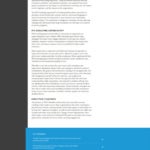
Who’s It For: Employers, Workforce Development
What’s It For: This training curriculum supports direct care supervisors to strengthen communication, critical thinking, teamwork, and problem-solving skills. Curriculum content includes improving active listening, learning how to ask questions, and giving and receiving feedback. While designed for direct care organizations, this curriculum has applications for practitioners across fields seeking to encourage supportive supervisory practices that are critical to job quality.

Year Up/Grads of Life – Free Course: Best Practices for Managing Opportunity Talent Remotely
Who’s It For: Employers, Economic Development, Investing and Lending, Worker Advocacy, Workforce Development
What It’s For: This self-paced, mobile-friendly online training module is designed to provide frontline managers with guidance to develop, support, and retain young adult workers remotely. The module includes a remote work checklist to assess employees’ work-from-home needs. While this training is designed specifically for business managers of frontline talent, workforce and economic development organizations may find it useful to share with employers they work with to encourage more supportive and equitable supervisory practices. To download the module, you will need to complete the sign-up form.
Fostering an Inclusive Culture
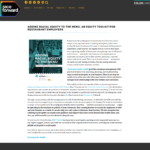
ROC United, Race Forward, and the Center for Social Inclusion – Adding Racial Equity to the Menu
Who’s It For: Employers, Economic Development, Investing and Lending, Worker Advocacy, Workforce Development
What’s It For: This toolkit provides leaders in the restaurant industry with practical resources for assessing, planning, and implementing steps to embed racial equity in workplace practices. Through partnerships with two restaurants, the toolkit highlights skills and tools critical to supporting restaurants on their racial equity journey and provides tangible examples to support implementation. This toolkit can help employers and their partners identify where racial bias may be operating in a restaurant’s policies and practices and implement solutions.
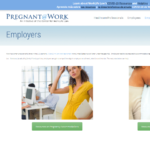
Center for WorkLife Law – Resources on Pregnancy/Breastfeeding Accommodations
Who’s It For: Employers, Policy, Worker Advocacy, Workforce Development
What’s It For: This website includes resources to support pregnant and breastfeeding workers. Resources are designed to educate employees about their workplace rights, for employers to adopt family-friendly policies and ensure compliance with state and federal laws, and for policymakers and advocates to support pregnant and breastfeeding employees. Tools include a model policy that reflects current legal requirements, a webinar for employee training, and a chart of workplace accommodations for common pregnancy-related conditions. In addition to workers, employers, and policymakers, workforce development professionals who support workers may also find this resource guide useful.
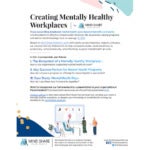
Mind Share Partners – Key Frameworks for Success: Creating Mentally Healthy Workplaces and Programs
Who’s It For: Employers
What’s It For: This guide contains frameworks and case studies designed to help employers support mental health in the workplace. Included are checklists to assess workplace practices, develop a workplace ecosystem that supports mental health, and implement new initiatives focused on mental health. There is also a case study focused on implementing mental health days for employees. Although written for employers, those who partner with employers may also find it beneficial to use or share this tool. Visitors can download the guide by scrolling down and filling out a brief sign-up form.
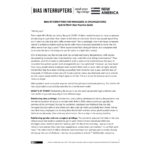
New America – Bias Interrupters for Managers and Organizations
Who’s It For: Employers, Worker Advocacy, Workforce Development
What’s It For: This toolkit from New America is designed to help managers develop return-to-work plans that center equity and inclusion in their management practices. Without intentional planning, transitioning back to in-person work could reinforce ableism as well as class, gender, non-caregiver, and race privileges. As society moves to rebuild and recover, careful consideration to avoid mishandling the return to on-site work is imperative. This toolkit has actionable resources to help managers gather input from employees, understand legal requirements surrounding the return to in-person work, and select equitable best practices. Employers may find this tool useful for developing successful, equitable hybrid work models. Additionally, workforce development and worker advocacy professionals may find this toolkit helpful to share with their employer-partners.
Transportation Supports
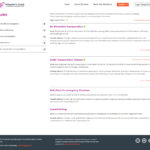
Women’s Fund of the Greater Cincinnati Foundation – Employer Toolkit
Who’s It For: Employers, Economic Development, Investing and Lending, Policy, Worker Advocacy, Workforce Development
What’s It For: This toolkit is a collection of nearly 60 workplace policies that can help support, stabilize, and retain employees in low-wage work. The toolkit also contains sections on gender-based violence workers may be experiencing in their home lives and second-chance employment for formerly incarcerated individuals After a quick registration for a free account, the Employer Toolkit search feature can help you identify specific policy recommendations, many of which include sample HR policy language that companies can draw from. One section provides guidance for developing supportive paid leave policies, which may be useful for both employers and the practitioners who work with them.
Childcare Supports
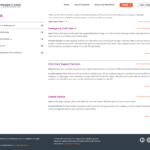
Women’s Fund of the Greater Cincinnati Foundation – Employer Toolkit
Who’s It For: Employers, Economic Development, Investing and Lending, Policy, Worker Advocacy, Workforce Development
What’s It For: This toolkit is a collection of nearly 60 workplace policies that can help support, stabilize, and retain employees in low-wage work. The toolkit also contains sections on gender-based violence workers may be experiencing in their home lives and second-chance employment for formerly incarcerated individuals After a quick registration for a free account, the Employer Toolkit search feature can help you identify specific policy recommendations, many of which include sample HR policy language that companies can draw from. One section provides guidance for developing supportive paid leave policies, which may be useful for both employers and the practitioners who work with them.
Supplemental Resources – Manager Training
- The Aspen Institute Economic Opportunities Program – The Benefits of Bridging Divides: How YouthBuild Philly Shares its Supportive Practices to Build Business Value and Better Jobs. This profile documents how YouthBuild Philly engages retail businesses to strengthen equity, inclusion, and retention for the young people the organization serves. Key practices include identifying quality jobs and providing training and coaching to frontline managers to foster supportive supervision. Workforce organizations seeking to forge stronger business partnerships that improve worker retention can learn from these approaches.
- NCWIT – NCWIT Tips: 13 Tips for Having Conversations About Flexible Work Options: For Managers. This brief set of 13 tips for managers and supervisors offers a framework by which to address scheduling flexibility. Each tip provides useful considerations to keep in mind when discussing flexible remote work options with employees. HR professionals, managers, and supervisors interested in creating work environments that support flexible working schedules may find this resource helpful. Additionally, workforce development and worker advocacy professionals may find it helpful to send this set of tips to employers with whom they work.
Supplemental Resources – Fostering an Inclusive Culture
- Deloitte – A new home at work – An employer’s guide to fostering inclusion for refugees in the workplace. This step-by-step guide for employers and the practitioners who work with them provides information about how to foster inclusion for refugees in the workplace to harness diverse perspectives and drive positive business outcomes. It makes the business case for hiring refugee employees and suggests six inclusion initiatives to support refugee retention.
- Human Rights Campaign – Transgender Inclusion in the Workplace: A Toolkit for Employers. This guide for employers makes the business case for the intentional inclusion of transgender workers, from recruitment and hiring to fostering a supportive culture. This resource can be used by organizations to learn about and evaluate their internal practices or practitioners looking to involve partners in working toward transgender inclusion.
- WorkLife Partnership – The Complete Guide to Supporting Employee Mental Health. This guide is designed to help employers and managers identify signs of mental health distress and develop a plan of action to help support employees. This guide, with tools embedded throughout, presents the business case for supporting employee mental health and outlines steps to support employees and improve company culture. Employers may find this resource useful to use internally, and organizations that work with businesses may want to share it with their employer partners.
Supplemental Resources – Transportation
- Best Workplaces for Commuters – Commuter Benefits Briefs. These briefs cover topics related to commuter benefits, including implementation approaches, costs, benefits, tax implications, and available resources. Employers and the practitioners supporting them may find these briefs useful for launching or enhancing a commuter benefits program.